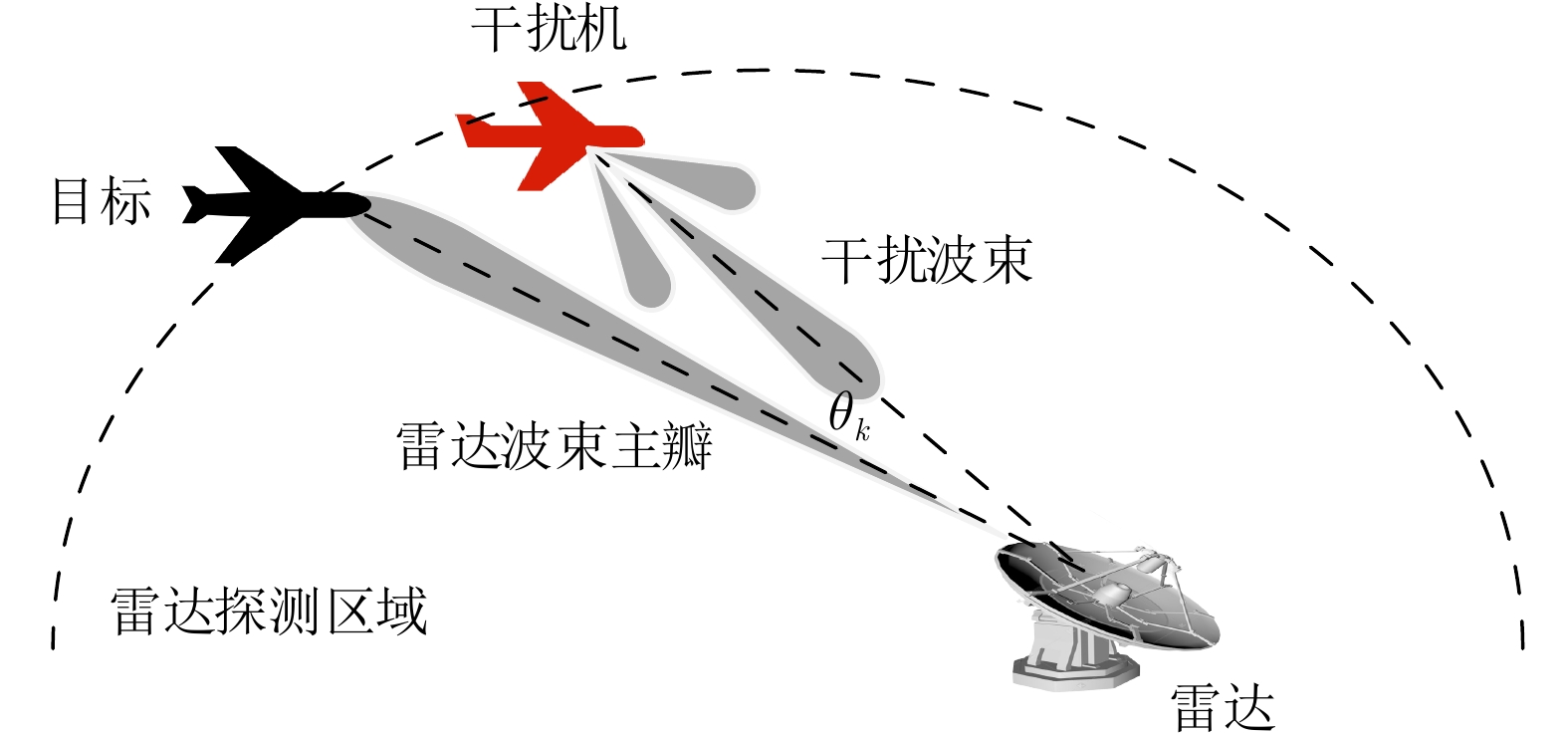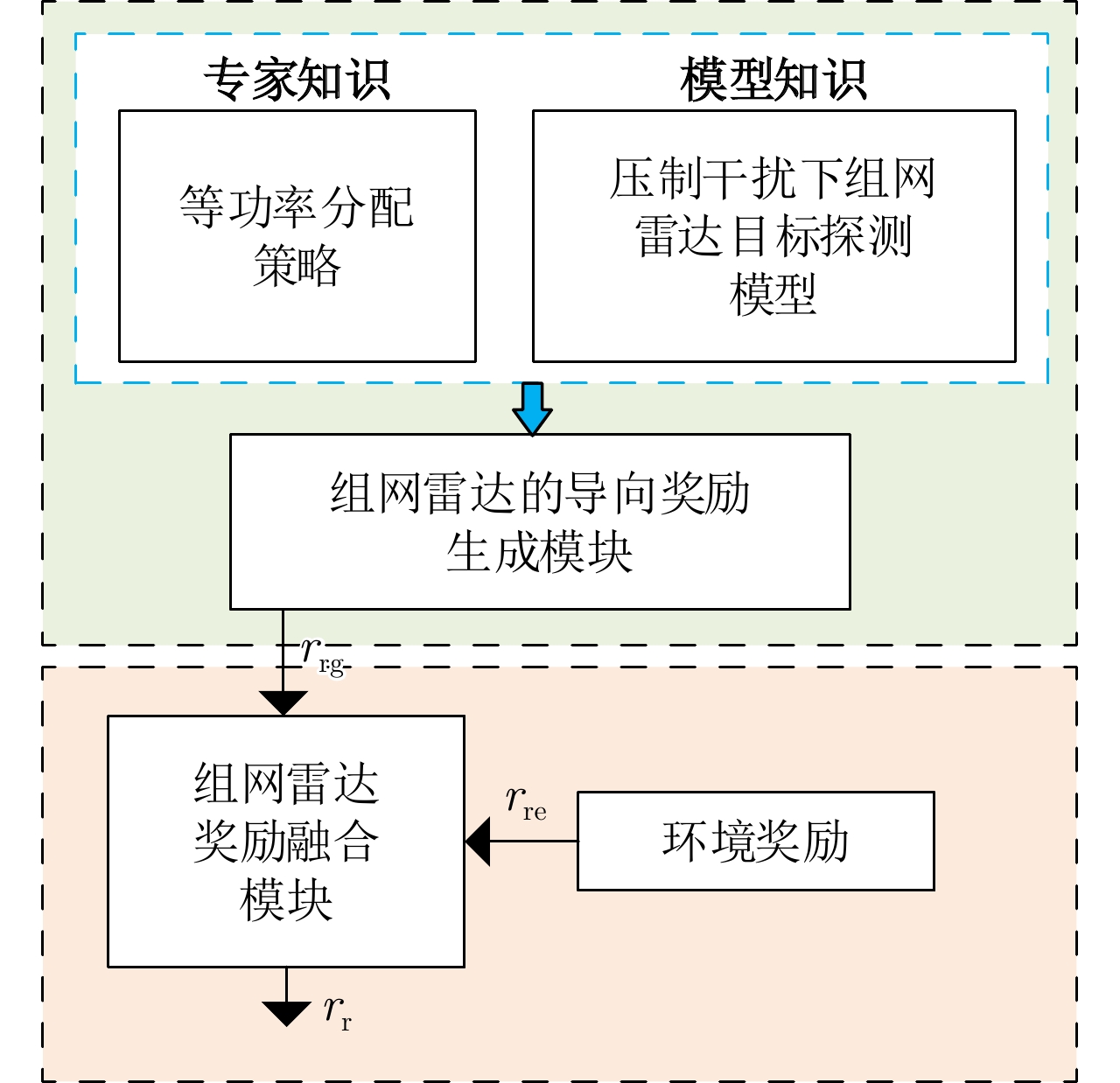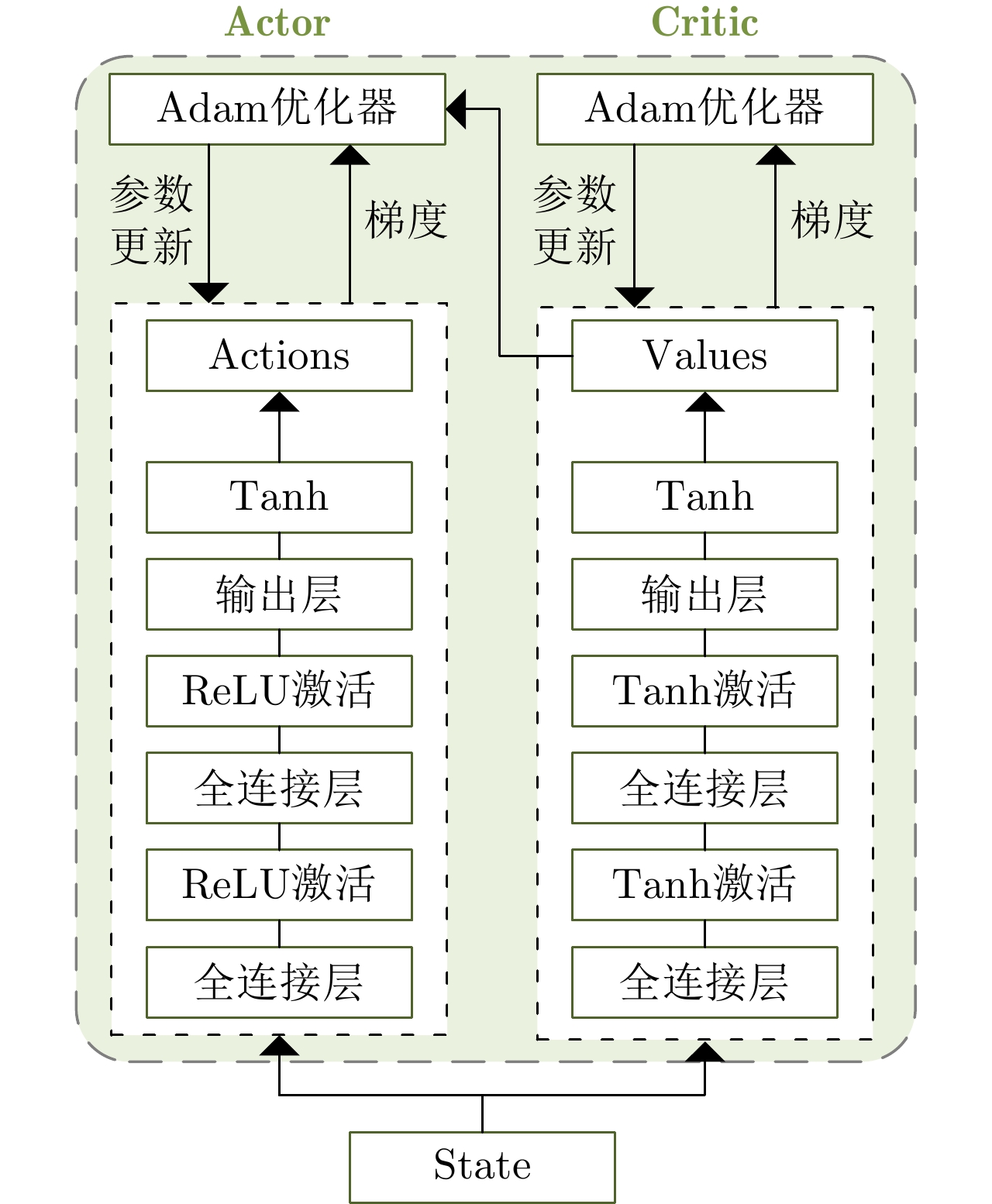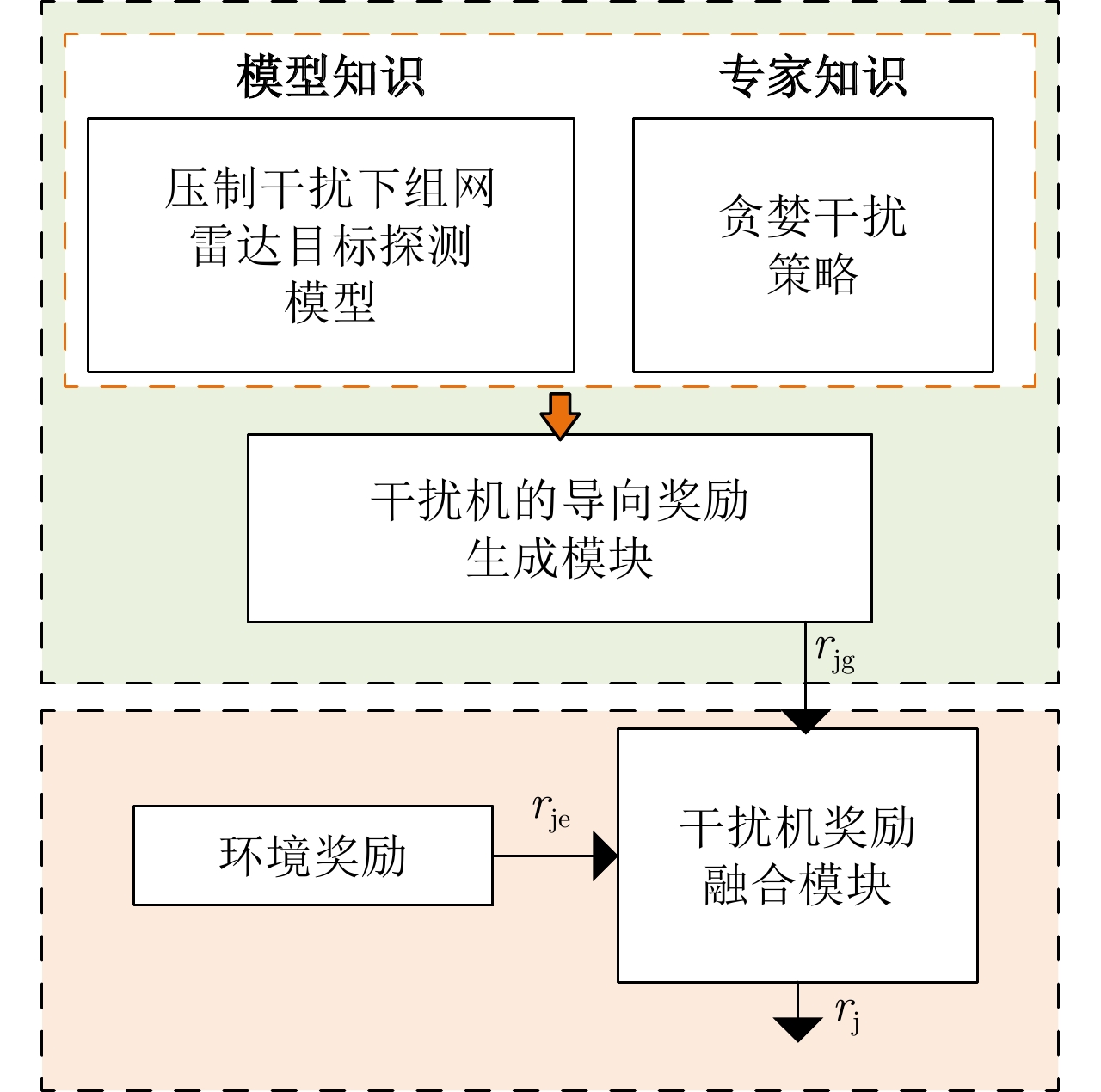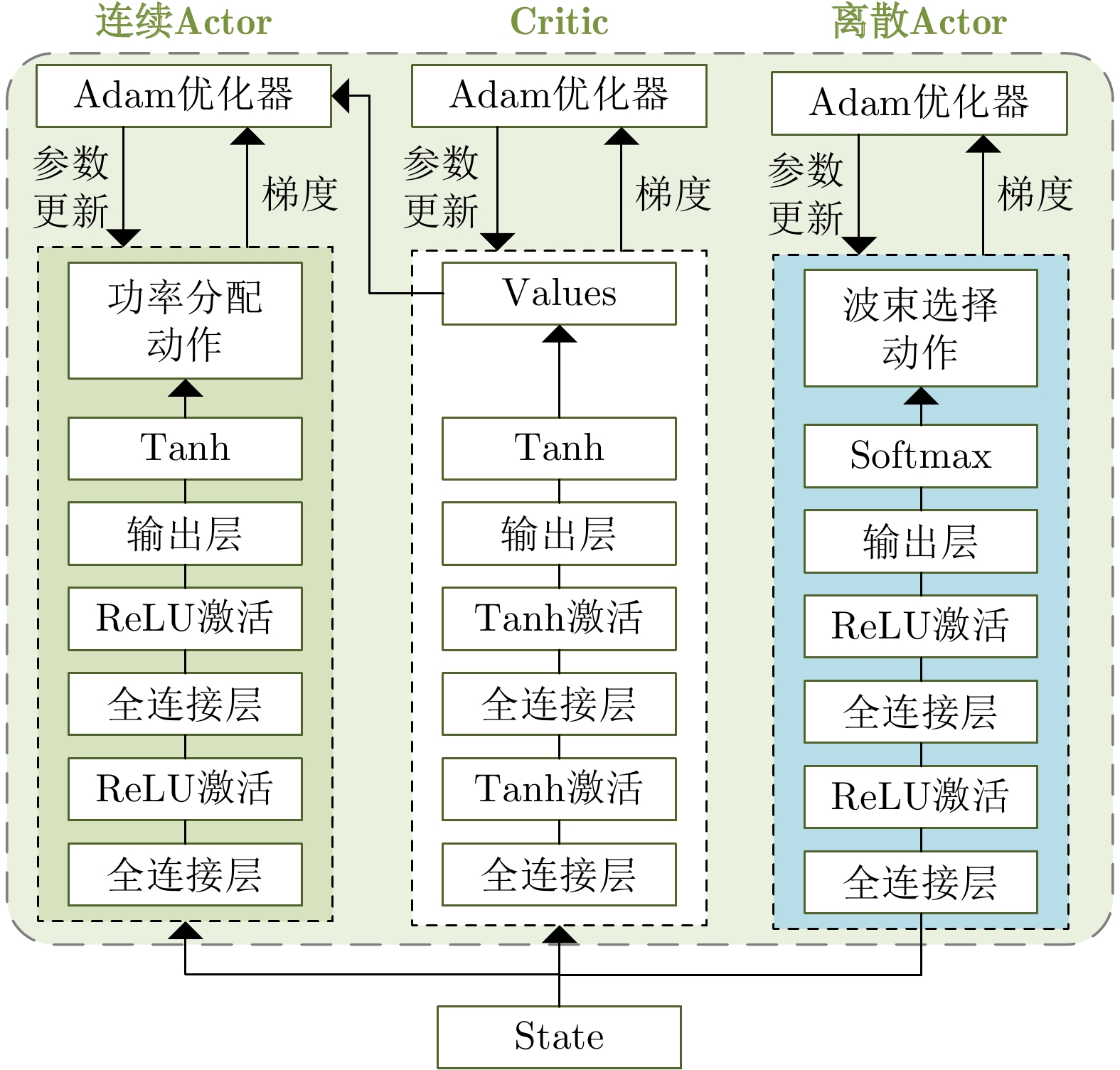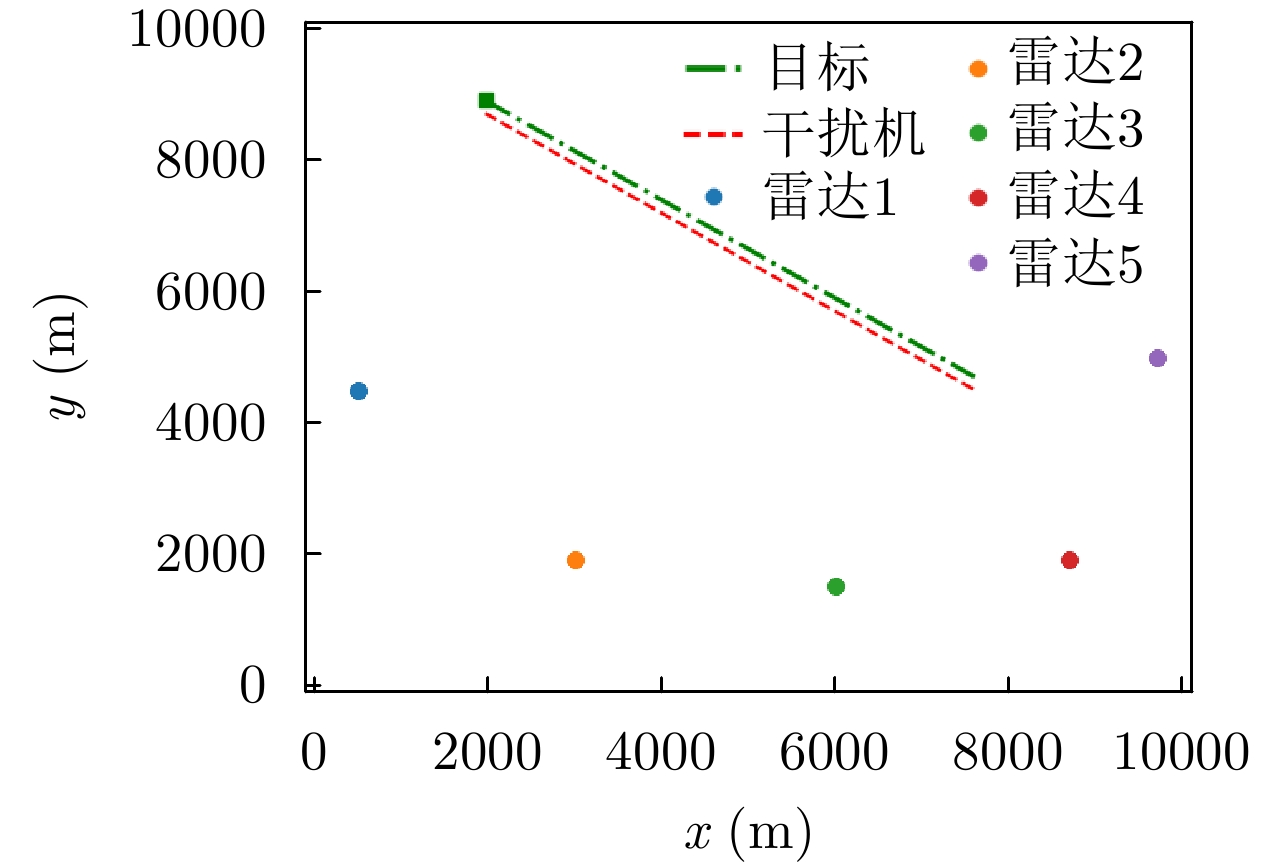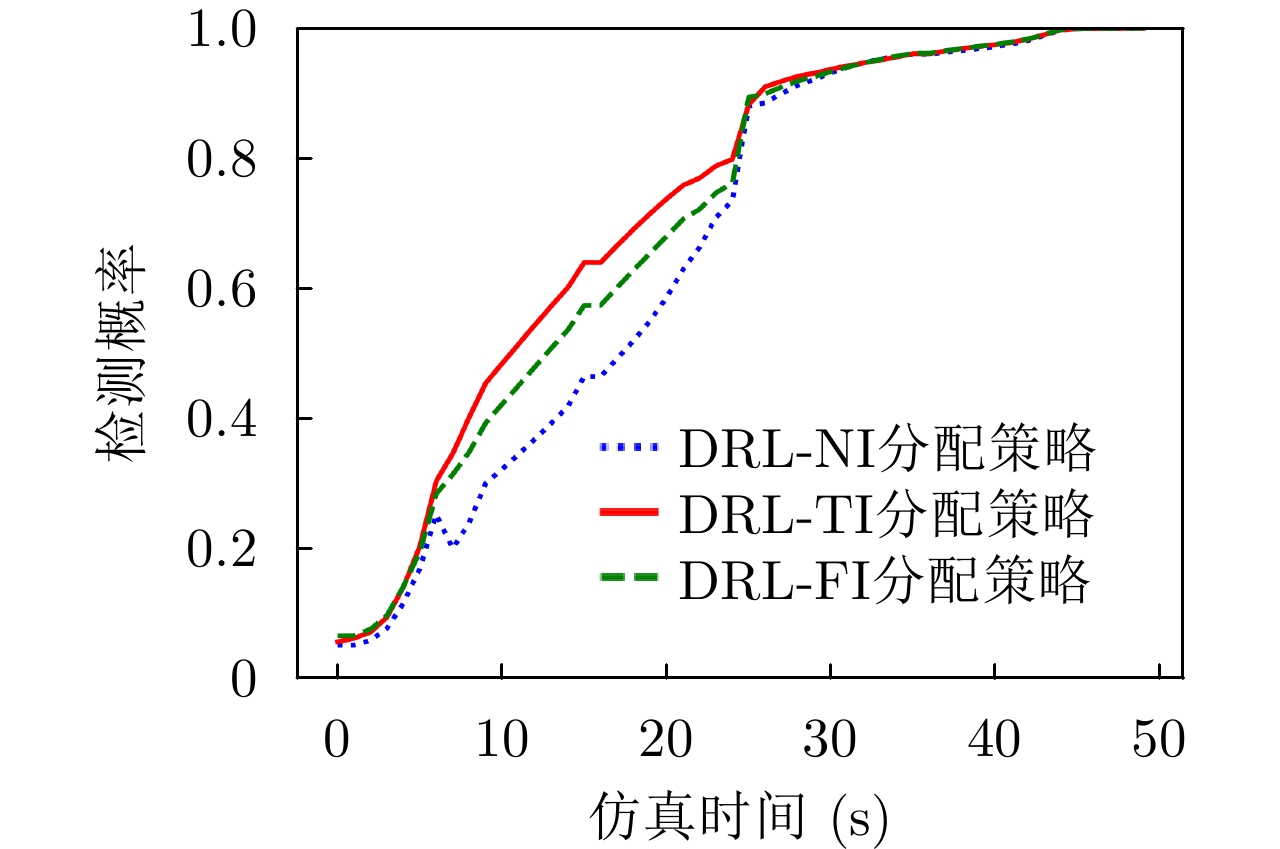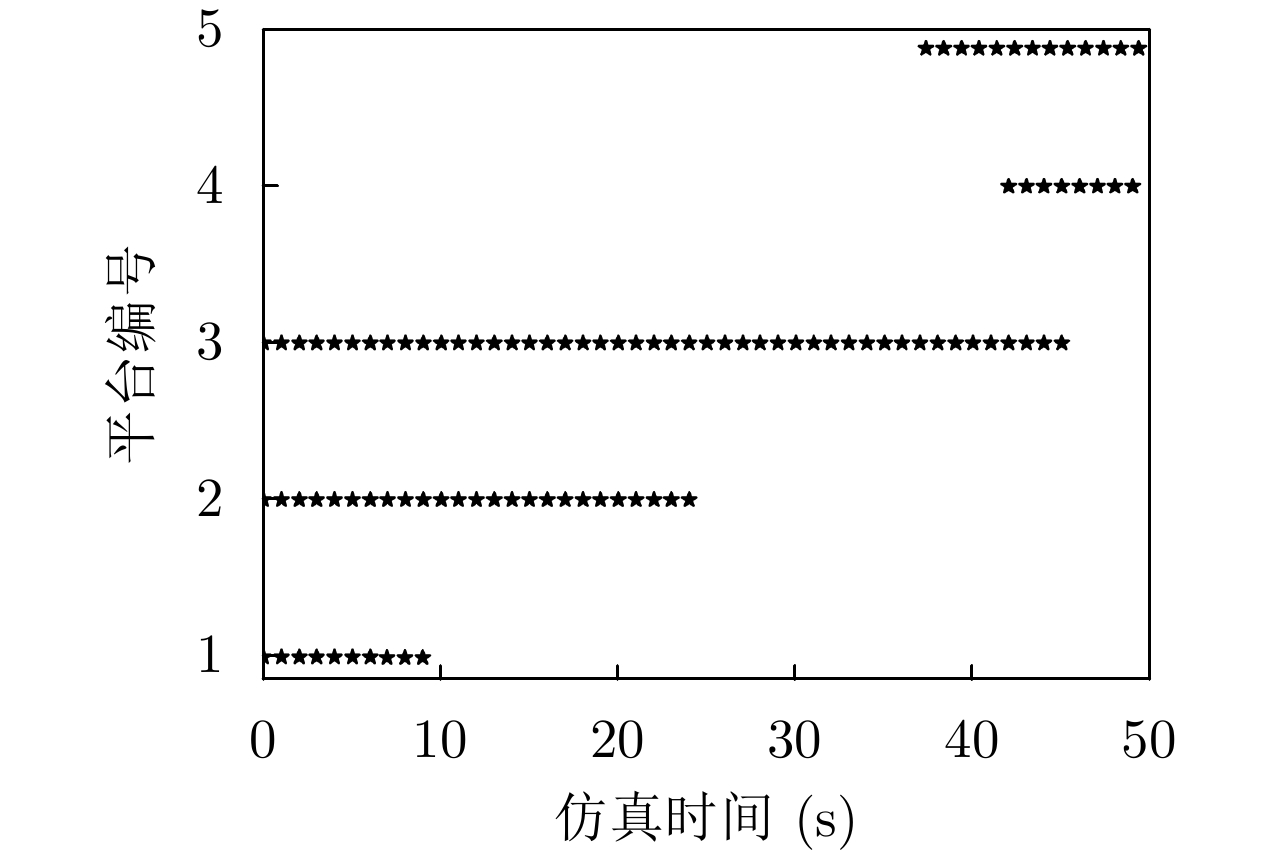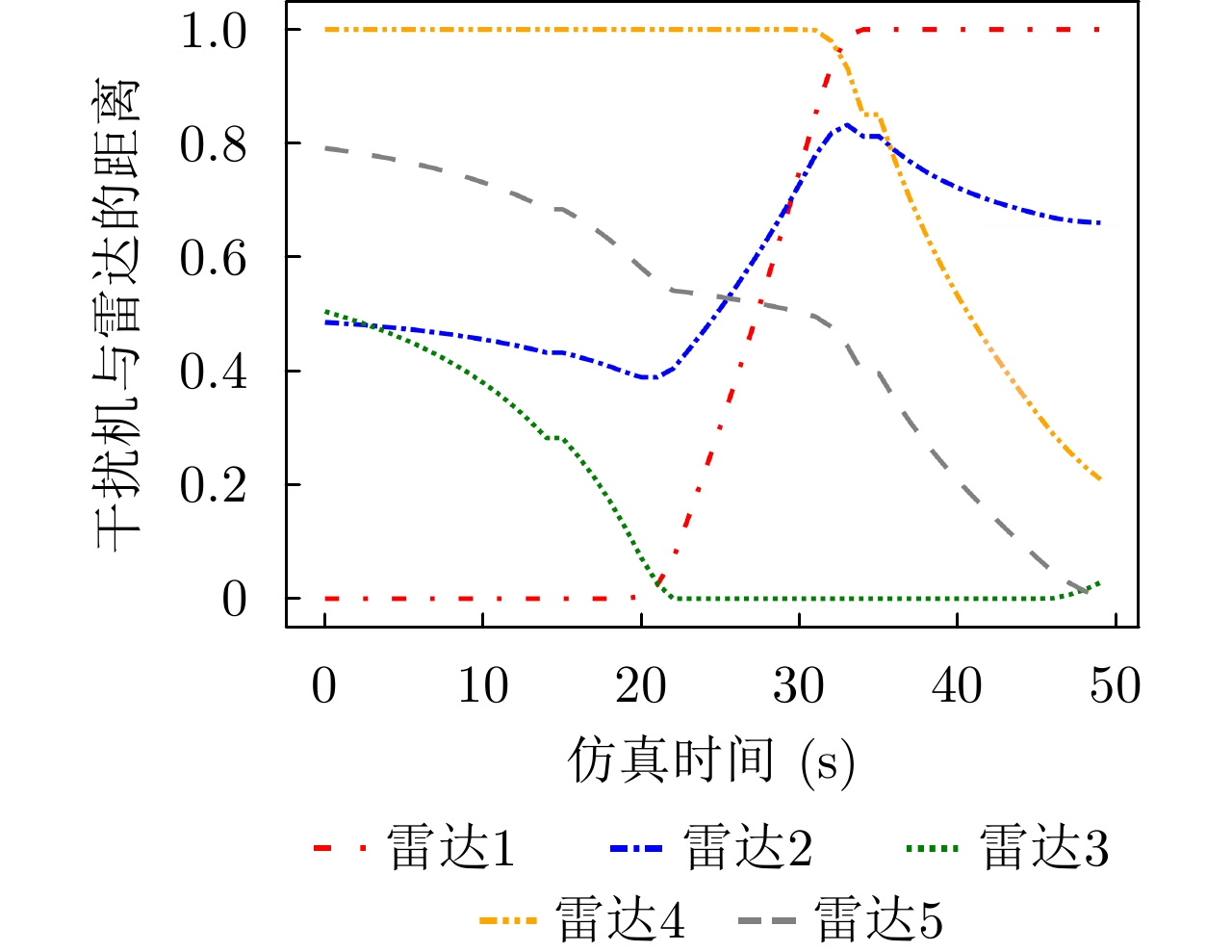- Home
- Articles & Issues
-
Data
- Dataset of Radar Detecting Sea
- SAR Dataset
- SARGroundObjectsTypes
- SARMV3D
- AIRSAT Constellation SAR Land Cover Classification Dataset
- 3DRIED
- UWB-HA4D
- LLS-LFMCWR
- FAIR-CSAR
- MSAR
- SDD-SAR
- FUSAR
- SpaceborneSAR3Dimaging
- Sea-land Segmentation
- SAR Multi-domain Ship Detection Dataset
- SAR-Airport
- Hilly and mountainous farmland time-series SAR and ground quadrat dataset
- SAR images for interference detection and suppression
- HP-SAR Evaluation & Analytical Dataset
- GDHuiYan-ATRNet
- Multi-System Maritime Low Observable Target Dataset
- DatasetinthePaper
- DatasetintheCompetition
- Report
- Course
- About
- Publish
- Editorial Board
- Chinese
| Citation: | WANG Yuedong, GU Yijing, LIANG Yan, et al. Deep game of escorting suppressive jamming and networked radar power allocation[J]. Journal of Radars, 2023, 12(3): 642–656. doi: 10.12000/JR23023 |
Deep Game of Escorting Suppressive Jamming and Networked Radar Power Allocation
DOI: 10.12000/JR23023 CSTR: 32380.14.JR23023
More Information-
Abstract
The traditional networked radar power allocation is typically optimized with a given jamming model, while the jammer resource allocation is optimized with a given radar power allocation method; such research lack gaming and interaction. Given the rising seriousness of combat scenarios in which radars and jammers compete, this study suggests a deep game problem of networked radar power allocation under escort suppression jamming, in which intelligent target jamming is trained using Deep Reinforcement Learning (DRL). First, the jammer and the networked radar are mapped as two agents in this problem. Based on the jamming model and the radar detection model, the target detection model of the networked radar under suppressed jamming and the optimized objective function for maximizing the target detection probability are established. In terms of the networked radar agent, the radar power allocation vector is generated by the Proximal Policy Optimization (PPO) policy network. In terms of the jammer agent, a hybrid policy network is designed to simultaneously create beam selection and power allocation actions. Domain knowledge is introduced to construct more effective reward functions. Three kinds of domain knowledge, namely target detection model, equal power allocation strategy, and greedy interference power allocation strategy, are employed to produce guided rewards for the networked radar agent and the jammer agent, respectively. Consequently, the learning efficiency and performance of the agent are improved. Lastly, alternating training is used to learn the policy network parameters of both agents. The experimental results show that when the jammer adopts the DRL-based resource allocation strategy, the DRL-based networked radar power allocation is significantly better than the particle swarm-based and the artificial fish swarm-based networked radar power allocation in both target detection probability and run time metrics. -

-
References
[1] 郝宇航, 蒋威, 王增福, 等. 分布式MIMO体制天波超视距雷达仿真系统[J/OL]. 系统工程与电子技术. https://kns.cnki.net/kcms/detail/11.2422.TN.20220625.1328.008.html, 2022.HAO Yuhang, JIANG Wei, WANG Zengfu, et al. A distributed MIMO sky-wave over-the-horizon-radar simulation system[J/OL]. Systems Engineering and Electronics. https://kns.cnki.net/kcms/detail/11.2422.TN.20220625.1328.008.html, 2022.[2] 潘泉, 王增福, 梁彦, 等. 信息融合理论的基本方法与进展(II)[J]. 控制理论与应用, 2012, 29(10): 1233–1244. doi: 10.7641/j.issn.1000-8152.2012.10.CCTA111336PAN Quan, WANG Zengfu, LIANG Yan, et al. Basic methods and progress of information fusion (II)[J]. Control Theory &Applications, 2012, 29(10): 1233–1244. doi: 10.7641/j.issn.1000-8152.2012.10.CCTA111336[3] WANG Yuedong, LIANG Yan, ZHANG Huixia, et al. Domain knowledge-assisted deep reinforcement learning power allocation for MIMO radar detection[J]. IEEE Sensors Journal, 2022, 22(23): 23117–23128. doi: 10.1109/JSEN.2022.3211606[4] 闫实, 贺静, 王跃东, 等. 基于强化学习的多机协同传感器管理[J]. 系统工程与电子技术, 2020, 42(8): 1726–1733. doi: 10.3969/j.issn.1001-506X.2020.08.12YAN Shi, HE Jing, WANG Yuedong et al. Multi-airborne cooperative sensor management based on reinforcement learning[J]. Systems Engineering and Electronics, 2020, 42(8): 1726–1733. doi: 10.3969/j.issn.1001-506X.2020.08.12[5] YAN Junkun, JIAO Hao, PU Wenqiang, et al. Radar sensor network resource allocation for fused target tracking: a brief review[J]. Information Fusion, 2022, 86/87: 104–115. doi: 10.1016/j.inffus.2022.06.009[6] 严俊坤, 陈林, 刘宏伟, 等. 基于机会约束的MIMO雷达多波束稳健功率分配算法[J]. 电子学报, 2019, 47(6): 1230–1235. doi: 10.3969/j.issn.0372-2112.2019.06.007YAN Junkun, CHEN Lin, LIU Hongwei, et al. Chance constrained based robust multibeam power allocation algorithm for MIMO radar[J]. Acta Electronica Sinica, 2019, 47(6): 1230–1235. doi: 10.3969/j.issn.0372-2112.2019.06.007[7] 时晨光, 董璟, 周建江. 频谱共存下面向多目标跟踪的组网雷达功率时间联合优化算法[J]. 雷达学报, 2023, 12(3): 590–601. doi: 10.12000/JR22146SHI Chenguang, DONG Jing, and ZHOU Jianjiang. Joint transmit power and dwell time allocation for multitarget tracking in radar networks under spectral coexistence[J]. Journal of Radars, 2023, 12(3): 590–601. doi: 10.12000/JR22146[8] 程婷, 恒思宇, 李中柱. 基于脉冲交错的分布式雷达组网系统波束驻留调度[J]. 雷达学报, 2023, 12(3): 616–628. doi: 10.12000/JR22211CHENG Ting, HENG Siyu, and LI Zhongzhu. Real-time dwell scheduling algorithm for distributed phased array radar network based on pulse interleaving[J]. Journal of Radars, 2023, 12(3): 616–628. doi: 10.12000/JR22211[9] 孙俊, 张大琳, 易伟. 多机协同干扰组网雷达的资源调度方法[J]. 雷达科学与技术, 2022, 20(3): 237–244, 254. doi: 10.3969/j.issn.1672-2337.2022.03.001SUN Jun, ZHANG Dalin, and YI Wei. Resource allocation for multi-Jammer cooperatively jamming netted radar systems[J]. Radar Science and Technology, 2022, 20(3): 237–244, 254. doi: 10.3969/j.issn.1672-2337.2022.03.001[10] 张大琳, 易伟, 孔令讲. 面向组网雷达干扰任务的多干扰机资源联合优化分配方法[J]. 雷达学报, 2021, 10(4): 595–606. doi: 10.12000/JR21071ZHANG Dalin, YI Wei, and KONG Lingjiang. Optimal joint allocation of multijammer resources for jamming netted radar system[J]. Journal of Radars, 2021, 10(4): 595–606. doi: 10.12000/JR21071[11] 黄星源, 李岩屹. 基于双Q学习算法的干扰资源分配策略[J]. 系统仿真学报, 2021, 33(8): 1801–1808. doi: 10.16182/j.issn1004731x.joss.20-0253HUANG Xingyuan and LI Yanyi. The allocation of jamming resources based on double Q-learning algorithm[J]. Journal of System Simulation, 2021, 33(8): 1801–1808. doi: 10.16182/j.issn1004731x.joss.20-0253[12] 段燕辉. 雷达智能抗干扰决策方法研究[D]. [硕士论文], 西安电子科技大学, 2021.DUAN Yanhui. Research on radar intelligent anti-jamming decision method[D]. [Master dissertation], Xidian University, 2021.[13] 宋佰霖, 许华, 齐子森, 等. 一种基于深度强化学习的协同通信干扰决策算法[J]. 电子学报, 2022, 50(6): 1301–1309. doi: 10.12263/DZXB.20210814SONG Bailin, XU Hua, QI Zisen, et al. A collaborative communication jamming decision algorithm based on deep reinforcement learning[J]. Acta Electronica Sinica, 2022, 50(6): 1301–1309. doi: 10.12263/DZXB.20210814[14] 肖悦, 张贞凯, 杜聪. 基于改进麻雀搜索算法的雷达功率与带宽联合分配算法[J]. 战术导弹技术, 2022(5): 38–43, 92. doi: 10.16358/j.issn.1009-1300.20220077XIAO Yue, ZHANG Zhenkai, and DU Cong. Joint power and bandwidth allocation of radar based on improved sparrow search algorithm[J]. Tactical Missile Technology, 2022(5): 38–43, 92. doi: 10.16358/j.issn.1009-1300.20220077[15] 靳标, 邝晓飞, 彭宇, 等. 基于合作博弈的组网雷达分布式功率分配方法[J]. 航空学报, 2022, 43(1): 324776. doi: 10.7527/S1000-6893.2020.24776JIN Biao, KUANG Xiaofei, PENG Yu, et al. Distributed power allocation method for netted radar based on cooperative game theory[J]. Acta Aeronautica et Astronautica Sinica, 2022, 43(1): 324776. doi: 10.7527/S1000-6893.2020.24776[16] SHI Chenguang, WANG Fei, SELLATHURAI M, et al. Non-cooperative game-theoretic distributed power control technique for radar network based on low probability of intercept[J]. IET Signal Processing, 2018, 12(8): 983–991. doi: 10.1049/iet-spr.2017.0355[17] 李伟, 王泓霖, 郑家毅, 等. 博弈条件下雷达波形设计策略研究[J]. 电子与信息学报, 2019, 41(11): 2654–2660. doi: 10.11999/JEIT190114LI Wei, WANG Honglin, ZHENG Jiayi, et al. Research on radar waveform design strategy under game condition[J]. Journal of Electronics &Information Technology, 2019, 41(11): 2654–2660. doi: 10.11999/JEIT190114[18] HE Jin, WANG Yuedong, LIANG Yan, et al. Learning-based airborne sensor task assignment in unknown dynamic environments[J]. Engineering Applications of Artificial Intelligence, 2022, 111: 104747. doi: 10.1016/j.engappai.2022.104747[19] MU Xingchi, ZHAO Xiaohui, and LIANG Hui. Power allocation based on reinforcement learning for MIMO system with energy harvesting[J]. IEEE Transactions on Vehicular Technology, 2020, 69(7): 7622–7633. doi: 10.1109/TVT.2020.2993275[20] RUMMERY G A and NIRANJAN M. On-Line Q-learning Using Connectionist Systems[M]. Cambridge, UK: Cambridge University, 1994: 6–7.[21] LI Jun and SHEN Xiaofeng. Robust jamming resource allocation for cooperatively suppressing multi-station radar systems in multi-jammer systems[C]. 2022 25th International Conference on Information Fusion (FUSION), Linköping, Sweden, 2022: 1–8.[22] YAO Zekun, TANG Chuanbin, WANG Chao, et al. Cooperative jamming resource allocation model and algorithm for netted radar[J]. Electronics Letters, 2022, 58(22): 834–836. doi: 10.1049/ell2.12611[23] ZHANG Dalin, SUN Jun, YI Wei, et al. Joint jamming beam and power scheduling for suppressing netted radar system[C]. 2021 IEEE Radar Conference (RadarConf21), Atlanta, GA, USA, 2021: 1–6.[24] 夏成龙, 李祥, 刘辰烨, 等. 基于深度强化学习的智能干扰方法研究[J]. 电声技术, 2022, 46(5): 144–149. doi: 10.16311/j.audioe.2022.05.035XIA Chenglong, LI Xiang, LIU Chenye, et al. Reserch of intelligent interference methods based on deep reinforcement learning[J]. Audio Engineering, 2022, 46(5): 144–149. doi: 10.16311/j.audioe.2022.05.035[25] LIU Weijian, WANG Yongliang, LIU Jun, et al. Performance analysis of adaptive detectors for point targets in subspace interference and Gaussian noise[J]. IEEE Transactions on Aerospace and Electronic Systems, 2018, 54(1): 429–441. doi: 10.1109/TAES.2017.2760718[26] 王国良, 申绪涧, 汪连栋, 等. 基于秩K融合规则的组网雷达系统干扰效果评估[J]. 系统仿真学报, 2009, 21(23): 7678–7680. doi: 10.16182/j.cnki.joss.2009.23.017WANG Guoliang, SHEN Xujian, WANG Liandong, et al. Effect evaluation for noise blanket jamming against netted radars Based on Rank-K information fusion rules[J]. Journal of System Simulation, 2009, 21(23): 7678–7680. doi: 10.16182/j.cnki.joss.2009.23.017[27] SUTTON R S and BARTO A G. Reinforcement Learning: An Introduction[M]. Cambridge: MIT Press, 2018: 327–331.[28] SCHULMAN J, WOLSKI F, DHARIWAL P, et al. Proximal policy optimization algorithms[EB/OL]. https://arxiv.53yu.com/abs/1707.06347, 2017.[29] WU Zhaodong, HU Shengliang, LUO Yasong, et al. Optimal distributed cooperative jamming resource allocation for multi-missile threat scenario[J]. IET Radar, Sonar & Navigation, 2022, 16(1): 113–128. doi: 10.1049/rsn2.12168[30] BARTON D K. Radar System Analysis and Modeling[M]. Boston: Artech House, 2004: 88–89. -
Proportional views

- Figure 1. An example of a suppression jammer protecting a target through the networked radar defense area
- Figure 2. The game closed-loop process of the jammer agent and the networked radar agent
- Figure 3. The relative spatial position of the jammer, radar and target
- Figure 4. The networked radar agent and environment interaction diagram
- Figure 5. The knowledge-assisted reward module for the networked radar agent
- Figure 6. The policy network of the networked radar agent
- Figure 7. The jammer agent and environment interaction diagram
- Figure 8. The knowledge-assisted reward function module for the jammer agent
- Figure 9. The hybrid policy network of the jammer agent
- Figure 10. The deployment of the networked radar and the trajectory of the target formation
- Figure 11. The rewards convergence curve
- Figure 12. The interference resource allocation result
- Figure 13. The target detection probability of three networked radar power allocation strategies
- Figure 14. The target detection probability of the DRL-based networked radar power allocation strategy under different interference models
- Figure 15. The networked radar power allocation results
- Figure 16. The indication that each radar node is interfered
- Figure 17. The distance variation of the jammer and the networked radar


 Submit Manuscript
Submit Manuscript Peer Review
Peer Review Editor Work
Editor Work

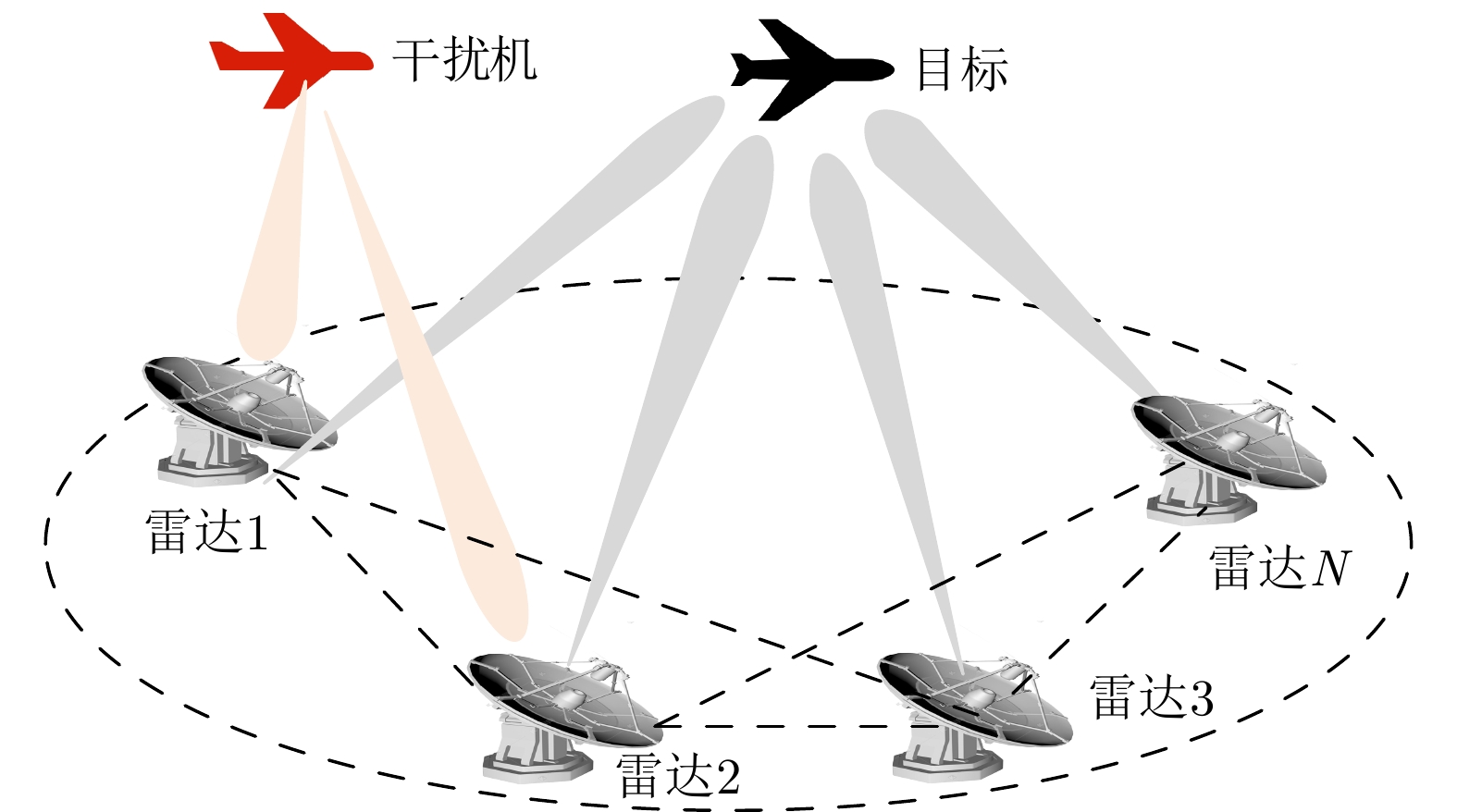



 DownLoad:
DownLoad:

